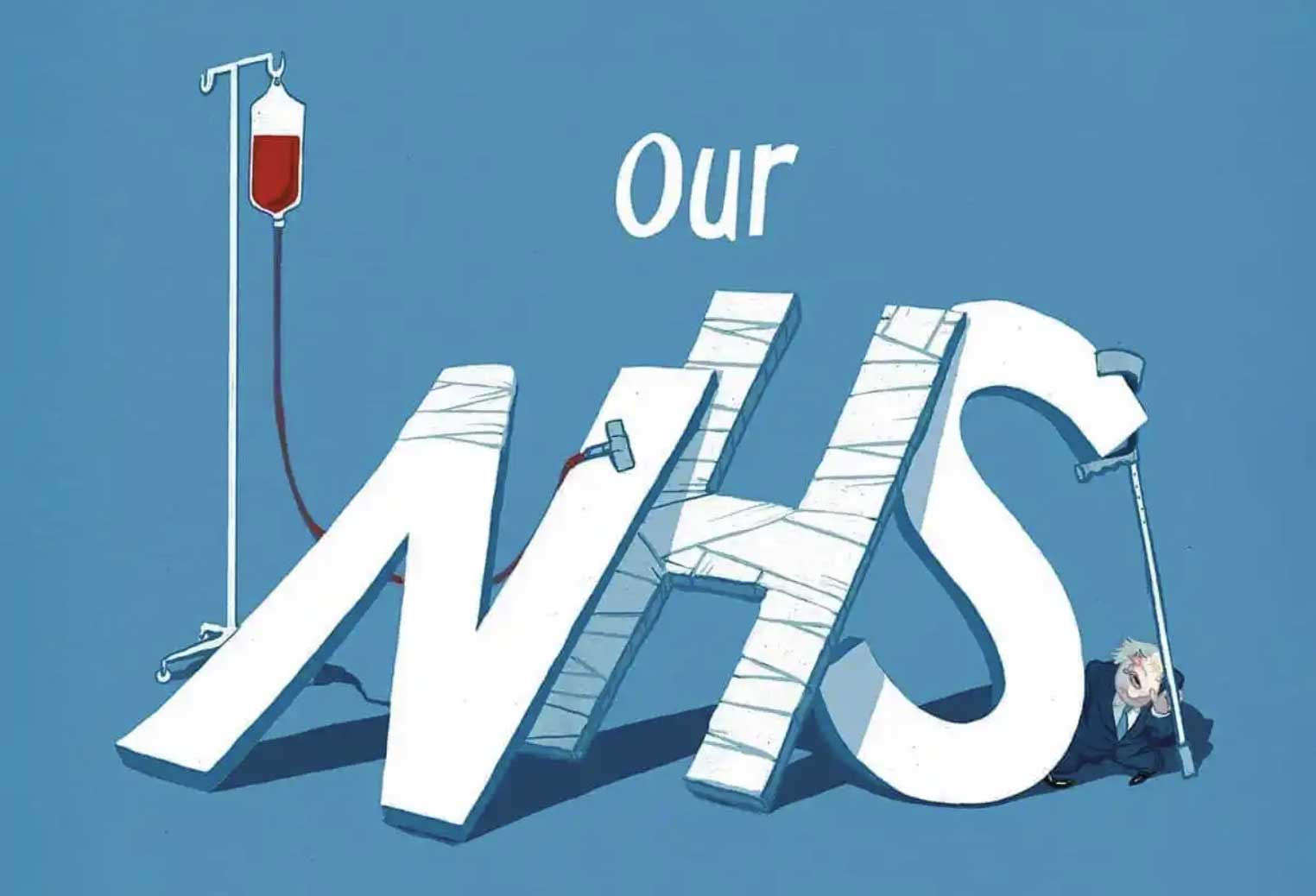That the NHS is in intensive care appears to be beyond doubt. The health service in England needs 12,000 doctors and 50,000 nurses and midwives, and waiting lists are expected to rise to 9.2 million by March 2024. The question now is what to do.
It’s a question that has been asked before, and the answers have been poor. One more heave at reform, a task force here, a task force there, another few billion all over the place and all will be well, so the defenders of the NHS claim. What they overlook, however, is that there have been more than a dozen major reform programmes over the past 30 years, yet our health outcomes remain dismal. Some 50,000 people die a year in the UK from ‘treatable mortality’ (that is, when patients receive sub-standard care) – comparable to the 145,000 excess deaths in the first two years of the pandemic.
Nor are the NHS’s problems about a lack of funding: our health spending has matched the average of similarly wealthy countries for over 10 years and the latest OECD numbers show that we spent 12 per cent of GDP on health in 2020, the fifth highest proportion in the world.
So, as the patient lies on the operating table, what are the options facing the surgeons who wish to provide good quality health care for all?
Some 50,000 people die a year in the UK from ‘treatable mortality’
The first thing to stress is that there is one model which it would be bonkers to consider: the American one. It is not just by far the most expensive health system in the world, but it has extraordinarily bad health outcomes: low life expectancy, extremely high death rates for treatable mortality and appalling neo-mortality rates for such an advanced economy.
Rather, here are three possible routes to recovery.
First, we could consider the Australian model, a system where everyone is given tax breaks to take out private health insurance, with an NHS-equivalent to care for those without health cover. Today, more than 50 per cent of Australians have private insurance (compared to 13 per cent in UK) with tons of competition offering over 17,000 different types of policies from 26 providers. There are all sorts of clever sticks and carrots: for example, the younger you take out private insurance, the bigger the tax break (as young people tend not need much health care). Equally, the rich get a tax penalty if they do not have private health cover. Insurance is not that expensive (under £2,000 a year for a 60-year-old). The result: Australia spends about 10 per cent more per person than we do but, in the international health league tables, it is second for life expectancy, top for cancer treatment and top for treatable mortality.
It would also be dead easy to implement: indeed, a similar system for the over-60s was introduced here in the 1990s. Tax breaks could be brought in slowly, allowing providers old and new to get up to scratch with the new system.
Some will shout that this isn’t fair because the poor would be subsiding the rich. This overlooks the fact that such a system should improve care for everyone as competition worked its magic. Just as it is not ‘fair’ that some people can go to Waitrose while others go to Lidl, we all accept that having a choice of supermarket is better than having a single, Soviet-style monopolistic empty-shelved shop.
Second, we could consider the European social insurance model, where everyone has to pay into a health insurance plan from a choice of insurers. Governments define the mandatory minimum package, and subsidises those on low incomes or with excessive health risks. Competition works its magic as usual. Patients have choice and some control over the system, and government interference is minimised. This would of course be far more difficult to implement that the Australian model. But it too can achieve the magic formula of lower costs, access to better health care and higher standards for all.
Third, we could consider true devolution of health care – the Swiss model. Highly decentralised, with the cantons and states playing the central role in providing health care, it positively exploits its ‘postcode lottery’ to learn from the success and failure of various local initiatives. Result: again, universal access to far better health care.
These reforms might need an explicitly bipartisan Royal Commission, working to a well-defined remit and a tight timetable, to decide which path should be pursued. It would need buy-in from NHS staff, management and unions, and should be preceded by some sort of concession by its participants to accept its conclusions. Politically, now might just be the time when it could be done as, for once, both Conservatives and Labour might see significant benefits: the new Tory Health Secretary would be able to park health as an issue for the Conservatives and wait for the Commission’s recommendations, while Labour could see that participation would help them to appear ‘ready for government’, prepared to put party politics aside for the good of the country.
So we do have a choice. The probability, however, is that the politicians will duck the challenge. The cost of action is much feared, but the cost of inaction is higher – measured not just in billions of wasted pounds but also in many thousands of unnecessary deaths and suffering.
Tim Knox is the author of The International Health Care Outcomes Index 2022 Update, published by Civitas.







Comments